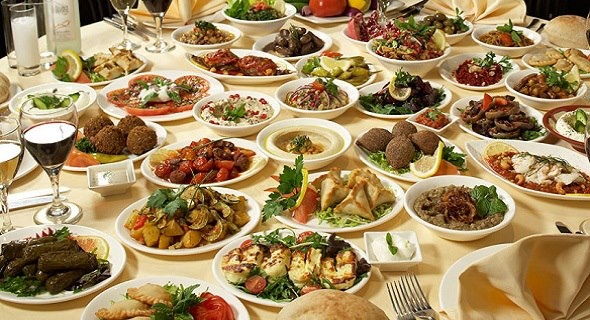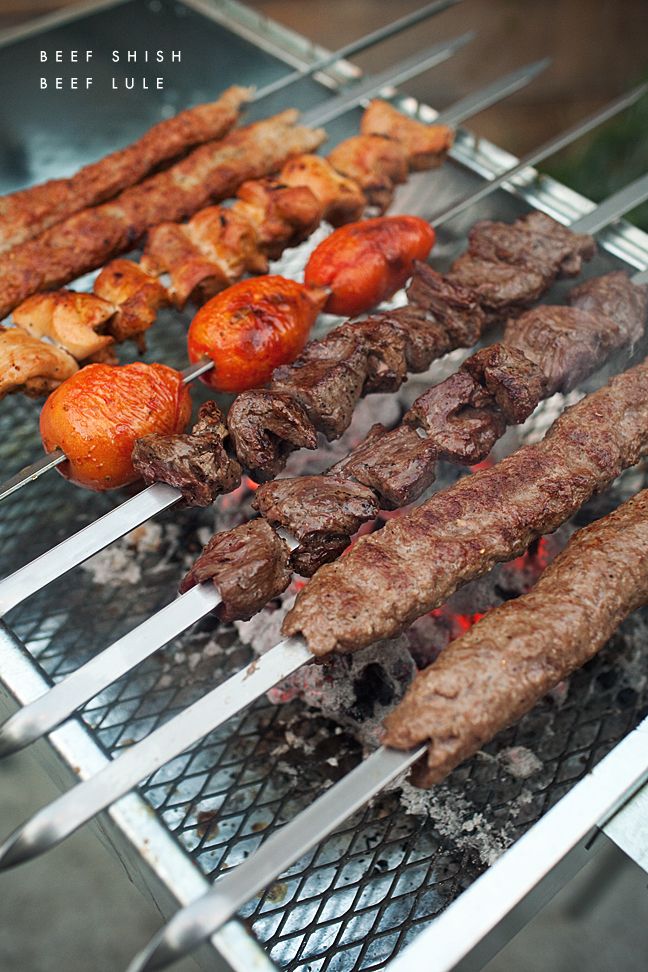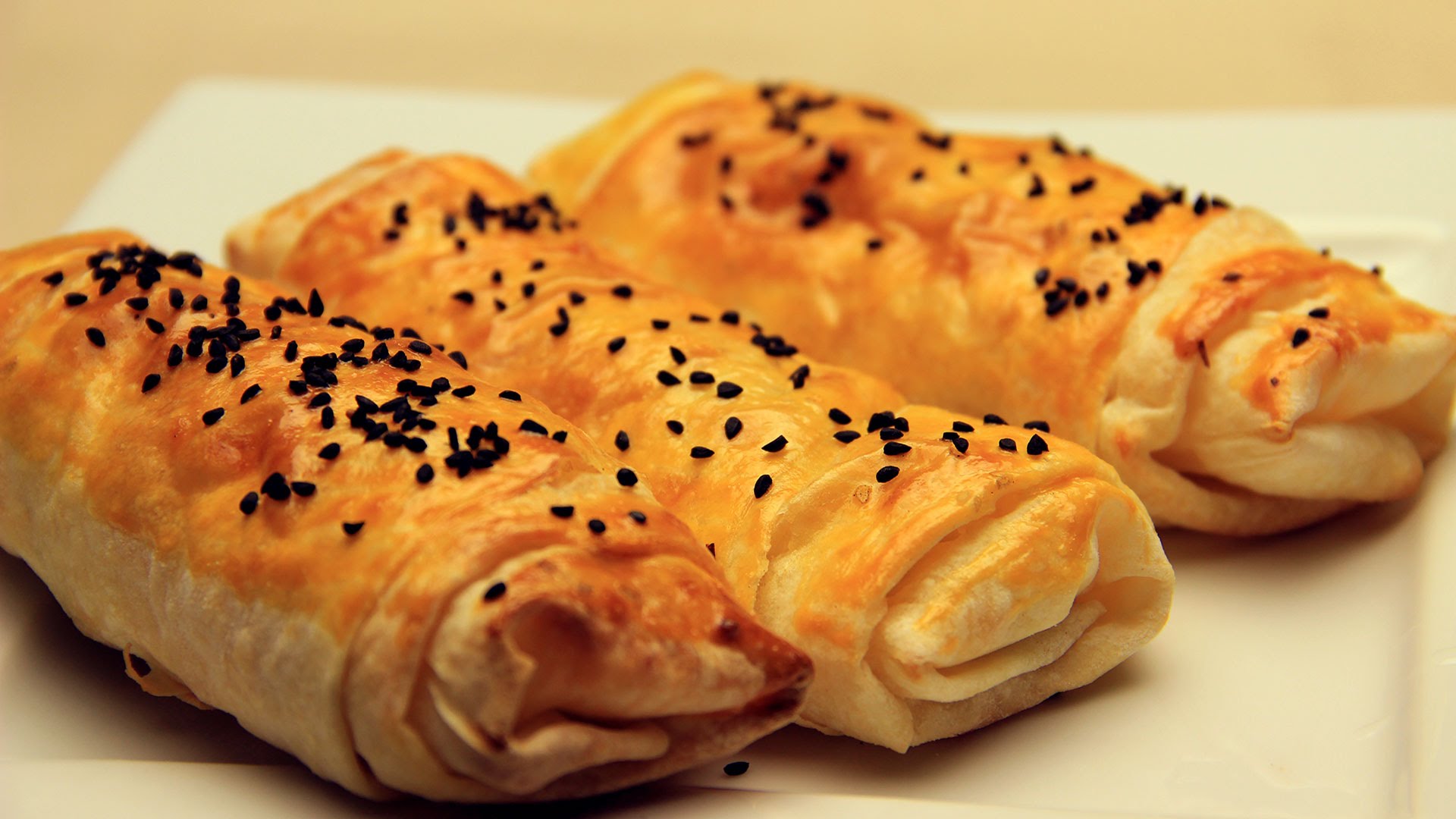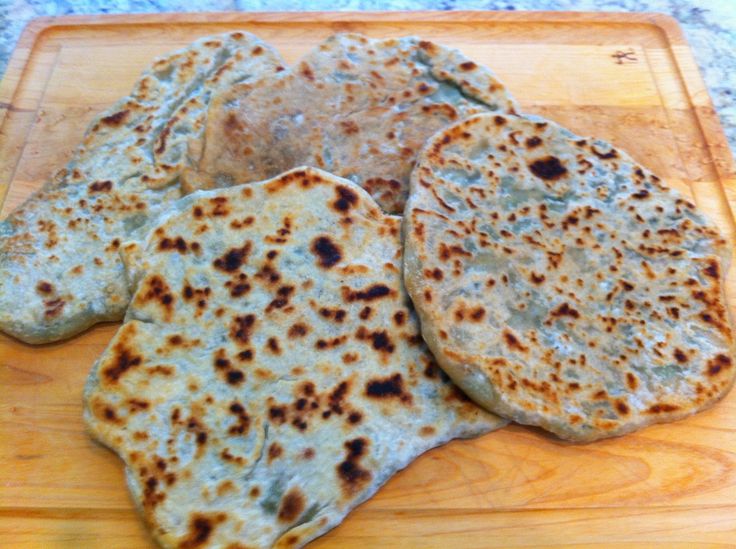Return
Gastronomy » Art, Culture and Tradition
|
Ref ID: 1AL2017/1797 | Posted On: 29-01-2017 | Updated on: 03-07-2017
|
|
Armenian National Cuisine
It is impossible to immerse oneself in Armenian culture and not to try Armenian national dishes. The cuisine here is so rich and various, that it will satisfy the tastes and preferences of any tourist. Even the most rigorous gourmets won’t remain indifferent.
Armenian National Cuisine: History and description
Armenian cuisine is the most ancient in the Caucasus region. It formed about 2000 years ago. Well-developed stock raising in the Armenian highlands led to a variety of meat and dairy products, and the early appearance of agriculture explains the extensive use of grains, vegetables, and herbs. It is hard to imagine Armenian meals without these products.
Originally Armenians were preparing food in pottery crockery and baking in a special oven – called a tonir. Another characteristic of the national cuisine is the extensive use of herbs and spices. Armenian cooks use 300 species of wild flowers and herbs as a seasoning or even as a main dish.
Armenian National Cuisine: National dishes and products


If you prefer to start your meal with a delicious hot soup – then you should try such Armenian soups as spas, yayni, tarhan, bozbash and, of course, the famous khash.
Spas is prepared from matsun (fermented milk product) with the addition of wheat. Khash is an ancient delicious and very healthy soup. It is prepared from beef hooves and tripe. Traditionally Armenians eat khash in the early morning, before breakfast, or at breakfast, adding chopped garlic and plenty of spicy greens.
If you cannot imagine your meal without meat –then Armenian cuisine is what you need, because it is hard to imagine an Armenian table without meat products.
Barbecue is prepared here using special Armenian recipes and is called “khorovats”. There are more than two dozen types of khorovats here. Before cooking, the meat is marinated in different sauces. Famous dolma is made from minced meat, which is wrapped in grape leaves. As the sauce, they serve matsun with garlic. Another famous meat dish is tjvjik, which is prepared from beef viscera.


Fish dishes are also very popular in Armenia. Different types of fish are bred in Lake Sevan, but the most delicious is a trout, which is called “ishxan” – “a royal fish”. The fish is boiled, stewed, fried, and cooked on skewer or on coal. Traditional fish dishes are kchuch and kutap.
It’s impossible to imagine Armenian table without bread, especially without lavash. Lavash is traditional bread, which is made according to the old technology of wheat flour, and water, and then baked in tonir. This thin pancake-like bread is of purely Armenian origin and is the pride of the entire nation.
Dairy product lovers can try Armenian white cheese and one of the most common fermented products – matsun. If diluted with water, matsun turns into an excellent refreshing drink – called tan.
Do you have a sweet tooth? Armenian cuisine has something special for you too. Gata is a multi-layered cake, each layer of which is saturated with melted butter and sugar. That’s why it has such soft dough and delicate flavor. A sudjukh is a must for any feast and New Year tables. It is prepared from grape syrup and walnuts.
Armenia is a sunny country, rich with bright and juicy fruits and vegetables. However, without any doubt, the symbol of Armenians has always been – an apricot. They have been growing it for more than 3000 years. It absorbs all the bright rays of the sun and every year pleases people with its delicate flavor and aroma.


Banquet tables in the country are always full of various viands. Armenians are very hospitable and like to entertain guests. If you manage to visit the Armenian feast, remember that none of the mistresses will let you leave the table before you have tried all the cooked dishes. Your plate will never be empty, as attentive hosts will take care of it.
Spices and Herbs
Armenian cuisine uses spices sparingly but instead relies on the use of fresh herbs.
The primary spices used in Armenian cuisine are:
- Salt
- Garlic
- Red pepper (particularly Aleppo pepper, which is a spicier variety of paprika)
- Dried mint (in Western Armenia)
- Cumin
- Coriander
- Sumac (the powdered dried berry of the Mediterranean sumac bush)
- Cinnamon
- Cloves
- Mahlab (the powdered pit of the black cherry)
The types of herbs used in cuisine are very strongly influenced by region. In Eastern Armenia, the following fresh herbs are used liberally:
- Dill
- Parsley
- Tarragon
- Basil
- Oregano, particularly wild oregano
- Thyme
In Western Armenia (current Republic of Turkey), the preferred herbs are:
- Mint
- Parsley
- Basil
- Tarragon
- Thyme
- Savory
Throughout the country, local herbs are used as well. Many of the herbs formerly used by Western Armenians have fallen out of use because of lack of availability. In the Republic of Armenia, and particularly in Artsakh (Nagorno-Karabagh), aveluk (Rumex crispus), chrchrok (a water grass similar to water cress), and other herbs are all used.
In addition to the above, various scents and attars commonly used in the Middle-East are also used in the making of sweets; for example, rose water and orange blossom water.
Breakfast
The modern Armenian breakfast consists of coffee or tea, plus a spread of cheeses, jams, jellies, eggs, and breads. Armenians living in the Diaspora often adopt local customs. Thus, Armenians in Lebanon may include “fool” (stewed fava beans in olive oil), those in the United States may include cereal, etc.
Traditional Armenian breakfast dishes were hearty. They included:
- Khash (which is still eaten on cold winter mornings in the Republic of Armenia)
- Kalagyosh There are many variants of this dish. It can be a meat and yogurt stew or it can be a vegetarian stew made with lentils, fried onions, and matzoon. In either case, it was traditionally eaten by crumbling stale lavash bread over it and eating it with a spoon.
Appetizers
Meals in Armenia often start with a spread of appetizers served for “the table”.
- Various cheeses, such as Chechil (tel panir) – braided and pickled string cheese, similar to Georgian sulguni, chanakh, and others made from sheep or cow’s milk.
- Topik or topig is a large vegetarian stuffed “meatball”.
- Countless stuffed vegetables, usually vegetarian.
- Pickles: cabbage, cucumber, tomatoes (ripe and unripe), cauliflower, carrots, grapes, garlic, etc.
- Fresh herbs
- Grain and herb salads
- Bread dough or phyllo dough pastries called byoreks (boereg). These are either baked or fried.
- Bread is “de rigueur”, particularly flat breads such as lavash.
Salads
Some Armenian salads combine a grain or legume with tomato, onions, fresh herbs. Mayonnaise is used in Western or Russian-inspired salads (e.g., Salade Olivier). Examples of Armenian salads include
- Eetch – cracked wheat salad, similar to the Middle Eastern tabouleh.
- Lentil salad – brown lentils, tomatoes, onions, in a dressing of lemon juice, olive oil, and chopped parsley. This salad has many variations, with the lentils being replaced by chick peas, black-eyed peas, chopped raw or roasted eggplant, etc.
- Jajukh – there are several varieties of this salad, which resembles a dip or cold soup. The cucumber jajukh is made with diced cucumbers in a matzoon/garlic sauce. The Swiss chard version is made with blanched, chopped chard in a thick “sauce” of drained matzoon and garlic. This salad is traditionally served on Easter Eve. The Lenten version of this (called “ajem jajukh”) substitutes tahini, lemon juice, and a little tomato sauce for the drained yogurt.
Byorek
Typical homemade byorek, with meat, caramelized onion and bell pepper filling
- Byoreks (Armenian: բյորեկ), are pies made with phyllo pastry and stuffed with cheese (panirov byorek, from Armenian: panir for cheese, Eastern Armenians refer to this as Khachapuri) or spinach (similar to spanakopita in Greek cuisine). They are a popular snack and fast food, often served as appetizer. Su byorek lit. ‘water burek’ is a lasagna-style dish with sheets of phyllo pastry briefly boiled in a large pan before being spread with fillings.[3] Msov byorek is a bread roll (not phyllo pastry) stuffed with ground meat (similar to Russian pirozhki).
- Semsek, from the region of Urfa, is a fried open-faced meat byorek.
- A specific Lenten byorek is made with spinach and tahini sauce
Grilled meats
Grilling (barbecue) is very popular in Armenia, and grilled meats are often the main course in restaurants and at family gatherings. Grilled meat is also a fast food.
- Khorovats (or khorovadz) (Armenian: խորոված xorovaç) – the Armenian word for barbecued or grilled meats (the generic kebab in English), the most representative dish of Armenian cuisine enjoyed in restaurants, family gatherings, and as fast food. A typicalkhorovats is chunks of meat grilled on a skewer (shashlik), although steaks or chops grilled without skewers may be also included. In Armenia itself, khorovats is often made with the bone still in the meat (as lamb or pork chops). Western Armenians outside Armenia generally cook the meat with bones taken out and call it by the Turkish name shish kebab. On the other hand, the word kebab in Armenia refers to uncased sausage-shaped patties from ground meat grilled on a skewer (called losh kebab or lule kebab by diasporan Armenians and Turks). In Armenia today, the most popular meat for khorovats (including losh kebab) is pork due to Soviet-era economic heritage. Armenians outside Armenia usually prefer lamb or beef depending on their background, and chicken is also popular.
- Gharsi khorovats (Armenian: Ղարսի խորոված) – slivers of grilled meat rolled up in lavash, similar to the Middle Eastern shawarma and the Turkish doner kebab; this “shashlik Ghars style” takes its name from the city of Kars (Armenian: Ghars) in eastern Turkey, close to the Armenian border
Soups
Armenian soups include spas, made from matzoon, hulled wheat and herbs (usually cilantro), and aveluk, made from lentils, walnuts, and wild mountain sorrel (which gives the soup its name). Kiufta soup is made with large balls of strained boiled meat (kiufta) and greens.
Another soup, khash, is considered an Armenian institution. Songs and poems have been written about this one dish, which is made from cow’s feet and herbs made into a clear broth. Tradition holds that khash can only be cooked by men, who spend the entire night cooking, and can be eaten only in the early morning in the dead of winter, where it served with heaps of fresh garlic and dried lavash.
T’ghit is a very special and old traditional food, made from t’tu lavash (fruit leather, thin roll-up sheets of sour plum purée), which are cut into small pieces and boiled in water. Fried onions are added and the mixture is cooked into a purée. Pieces of lavash bread are placed on top of the mixture, and it is eaten hot with fresh lavash used to scoop up the mixture by hand.
Karshm is a local soup made in the town of Vaik in the Vayots Dzor Province. This is a walnut based soup with red and green beans, chick peas and spices, served garnished with red pepper and fresh garlic. Soups of Russian heritage include borscht, a beet root soup with meat and vegetables (served hot in Armenia, with fresh sour cream) and okroshka, a matzoon or kefir based soup with chopped cucumber, green onion, and garlic.
- Arganak (Armenian: արգանակ arganak) – chicken soup with small meatballs, garnished before serving with beaten egg yolks, lemon juice, and parsley.
- Blghourapour (Armenian: բլղուրապուր blġurapur) – a sweet soup made of hulled wheat cooked in grape juice; served hot or cold.
- Bozbash (Armenian: բոզբաշ bozbaš) – a mutton or lamb soup that exists in several regional varieties with the addition of different vegetables and fruits.
- Brndzapour (Armenian: բրնձապուր brnjapur) – rice and potato soup, garnished with coriander.
- Dzavarapour (Armenian: ձավարապուր javarapur) – hulled wheat, potatoes, tomato purée; egg yolks diluted with water are stirred into the soup before serving.
- Flol – beef soup with coarsely chopped spinach leaves and cherry-sized dumplings (Armenian: flol) made from oatmeal or wheat flour.
- Harissa (Armenian: հարիսա harisa, also known as ճիտապուր) – porridge of coarsely ground wheat with pieces of boned chicken
- Katnapour (Armenian: կաթնապուր kat’napur) – a milk-based rice soup, sweetened with sugar.
- Katnov (Armenian: կաթնով kat’nov) – a milk-based rice soup with cinnamon and sugar.
- Kololik (Armenian: կոլոլիկ kololik) – soup cooked from mutton bones with ground mutton dumplings, rice, and fresh tarragon garnish; a beaten egg is stirred into the soup before serving.
- Krchik (Armenian: Քրճիկ kṙčik) – soup made from sauerkraut, pickled cabbage, hulled wheat, potatoes, and tomato purée.
- Mantapour (Armenian: մանթապուր mantʿapur) – beef soup with manti; the manti are typically served with matzoon or sour cream (ttvaser), accompanied by clear soup.
- Matsnaprtosh (Armenian: մածնաբրդոշ maçnabrdoš) – this is the same as okroshka, referenced earlier, with sour clotted milk diluted with cold water, with less vegetation than okroshka itself. Matsnaprtosh is served cold as a refreshment and supposedly normalizes blood pressure.
- Putuk (Armenian: պուտուկ putuk) – mutton cut into pieces, dried peas, potatoes, leeks, and tomato purée, cooked and served in individual crocks.
- Sarnapour (Armenian: սառնապուր saṙnapur) – pea soup with rice, beets and matzoon.
- Snkapur (Armenian: սնկապուր snkapur) – a mushroom soup.
- Tarkhana (Armenian: թարխանա t’arxana) – flour and matzoon soup
- Vospapour (Armenian: ոսպապուր ospapur) – lentil soup with dried fruits and ground walnuts.
- Pekhapour (mustache soup) – chick peas, shelled wheat (ծեծած), lentils, in a vegetarian broth and fresh tarragon. This soup originates from Aintab.
Fish
- Ishkhan (Armenian: իշխան išxan) – Sevan trout (endangered species), served steamed, grilled on a skewer, or stuffed and baked in the oven
- Sig (Armenian: սիգ sig) – a whitefish from Lake Sevan, native to northern Russian lakes (endangered species in Armenia)
- Karmrakhayt (alabalagh) (Armenian: կարմրախայտ karmrakhayt) – a river trout, also produced in high-altitude artificial lakes (e.g., the Mantash Reservoir in Shirak Province).
- Koghak (Armenian: կողակ koġak) – an indigenous Lake Sevan fish of the carp family, also called Sevan khramulya (overfished)
Main courses
- Fasulya (fassoulia) – a stew made with green beans, lamb and tomato broth or other ingredients
- Ghapama (Armenian: ղափամա ġap’ama) – pumpkin stew
- Kchuch (Armenian: կճուճ kč̣uč̣) – a casserole of mixed vegetables with pieces of meat or fish on top, baked and served in a clay pot
- Tjvjik (Armenian: տժվժիկ tžvžik) – a dish of fried liver and kidneys with onions
Meat products
- Basturma (Armenian: բաստուրմա basturma) – a highly seasoned, air-dried raw beef, similar to bindenfleisch
- Yershig (Armenian: երշիկ eršik or սուջուխ suǰux) – a spicy beef sausage (called sujuk in Turkey)
- Kiufta (Armenian: քյուֆթա k’yuft’a) – meaning meatball comes in many types, such as Hayastan kiufta, Kharpert kiufta (Porov kiufta), Ishli kiufta, etc.
Dairy products
- Labneh – Strained dense yogurt made from sheep, cow, or goat milk; often served in mezze with olive oil and spices
- Matzoon (Armenian: մածուն maçun)
- Tahn (Armenian: թան t’an) – a sour milk drink prepared by diluting matzoon with cold water, similar to ayran
- Ttvaser (Armenian: թթվասեր t’t’vaser) – sour cream in Armenian; also known by the Russian-derived word smetan
Bread

- Lavash (Armenian: լավաշ lavaš) – the staple bread of Armenian cuisine
- Matnakash (Armenian: մատնաքաշ matnak’aš) – soft and puffy leavened bread, made of wheat flour and shaped into oval or round loaves; the characteristic golden or golden-brown crust is achieved by coating the surface of the loaves with sweetened tea essence before baking.
- Choereg (or choreg) – braided bread formed into rolls or loaves, also a traditional loaf for Easter.
- Zhingyalov hats (Armenian: Ժինգյալով հաց) – Not entirely a bread you would eat with your everyday meal. Zhingyalov hac is an Armenian dish that is made with dough, dried cranberry, pomegranate molasses,that go inside the dough, and 7 different greens which include spinach, cilantro, parsley, basil, scallions, dill, mint. There is a variety of combinations that can be used in the bread and these greens can easily be substituted for other greens. The greens are placed in the bread and the bread is folded like a calzone.
Sweets
- Alani (Armenian: ալանի alani) – pitted dried peaches stuffed with ground walnuts and sugar.
- Kadaif (ghataif) – shredded dough with cream, cheese, or chopped walnut filling, soaked with sugar syrup.
- Anoushabour (Armenian: անուշապուր anušapur) – dried fruits stewed with barley, garnished with chopped almonds or walnuts (a traditional Christmas pudding).
- Bastegh or pastegh (Armenian: պաստեղ pasteġ) – homemade fruit leather.
- T’tu lavash (Armenian: թթու լավաշ t’t’u lavaš) – thin roll-up sheets of sour plum purée (fruit leather).
Ritual foods
- Nshkhar (Armenian: նշխար nšxar) – bread used for Holy Communion
- Mas (Armenian: մաս mas) – literally means “piece” a piece of leftover bread from the making of Nshkhar, given to worshippers after church service
- Matagh (Armenian: մատաղ mataġ) – sacrificial meat. can be of any animal such as goat, lamb, or even bird.
Drinks
Jermuk is a bottled mineral water originating from the town of Jermuk in Armenia, and bottled since 1951
- Armenian coffee (Armenian: սուրճ) – strong black coffee, finely ground, sometimes sweet
- Kefir (Armenian: կեֆիր) – fermented milk drink
- Kvas (Armenian: կվաս) – sweet, fermented bread drink
- Tahn (Armenian: թան) – yogurt drink (still or carbonated)
- Jermuk (Armenian: Ջերմուկ J̌ermuk) – a brand of mineral water from the Jermuk area
- Hayq, Sari – a brand of bottled mountain spring water from the Jermuk area (in Armenian Hayq stands for Armenia and Sari for from the mountains).
- Tarkhun soda (Armenian: թարխուն t’arxun) – tarragon-flavored soda.
Alcoholic drinks
Beer
Popular Brands
- Kotayk
- Kilikia
- Erebuni (produced by Kotayk Brewery)
- Gyumri
Brandy
Armenian brandy (Armenian: կոնյակ cognac), known locally as konyak is perhaps Armenia’s most popular exported alcoholic drink. It has a long history of production, even being served at the Yalta Conference.
Popular Brands
- Ararat
- Noy
Oghi
Oghi (Armenian: օղի òġi) – an Armenian vodka, usually distilled from fruit; also called aragh. Artsakh is a well-known brand name of Armenian mulberry vodka (tuti oghi) produced in Nagorno-Karabakh from local fruit. In the Armenian Diaspora, where fruit vodka is not distilled, oghi refers to the aniseed-flavored distilled alcoholic drink called arakh in the Middle East, raki in Turkey, or ouzo in Greece.
- Mulberry vodka (Armenian: թթի արաղ t’t’i araġ) A traditional Armenian vodka made from distilling the Mulberry, which is a berry grown all over Armenia, especially in the highlands and Artsakh.
Wine
The alcoholic drink with the longest history in Armenia is wine. The oldest winery in the world was discovered in Armenia. Historically, wineries in Armenia were concentrated along the Ararat valley. Of particular note was the district of Koghtn (Գողթն, current Nakhichevan area). Today, Armenian wineries are concentrated in the Areni region (district of Vayots Dzor).
Armenian wine is mostly made from local varietals, such as Areni, Lalvari, Kakhet, etc., though some wineries mix in better known European varietals such as Chardonnay and Cabernet. Winemaking took a downward plunge in the years following the collapse of the Soviet Union, but is undergoing a revival, with the addition of world-class labels such as Zorah Wines. A yearly wine festival, held in Areni, is popular with the locals and features wines from official wineries as well as homemade hooch of varying quality. Armenian wines are predominantly red and are sweet, semi-sweet (Vernashen, Ijevan), or dry (Areni).
In addition to grapes, wines have been made with other fruit, notably pomegranate (Armenian: նռան գինի nṙan gini), apricot, quince, etc. In some cases, these fruit wines are fortified.
Armenian National Cuisine: Restaurants
For those who want to try Armenian national dishes, there are lots of restaurants in the country. You can visit “Dolmama” restaurant. Here you will find ethnic cuisine recipes which are combined with European sophistication. Any dish served here is worthy of the highest praise. The cost of one dinner, including several dishes, ranges from 15,000 to 30,000 AMD.
“Capella” restaurant will also please its guests with tasty Armenian dishes and rather low prices. Here you can enjoy the food not only in the restaurant, but order it to your address as well. The cost of one dinner, including several dishes, ranges from 6,000 to 12,000 AMD.
For those who want to try famous khash, the best choice is “Tavern Yerevan” restaurant. In Armenia, khash is not just food, but a special morning ritual that nourishes not only the stomach, but also the soul. This meal gathers all friends and relatives around one table. “Tavern Yerevan” creates wonderful atmosphere and all the necessary conditions to have a good time and enjoy this popular dish. The cost of one dinner, including several dishes, ranges from 10,000 to 30,000 AMD.


If you are a fan of seafood then you should definitely try some fish dishes on the coast of Lake Sevan. For the most delicious trout you can go to Tsapatakh village. In “Zanazan” restaurant, an absolutely stunning trout in lavash is served, which is baked with seasonal vegetables in an oven. Almost all restaurants in Sevan prepare kebab from crayfish tails, which is an amazingly delicious and delicate dish.
Click on photo to view full image or click to watch video.







